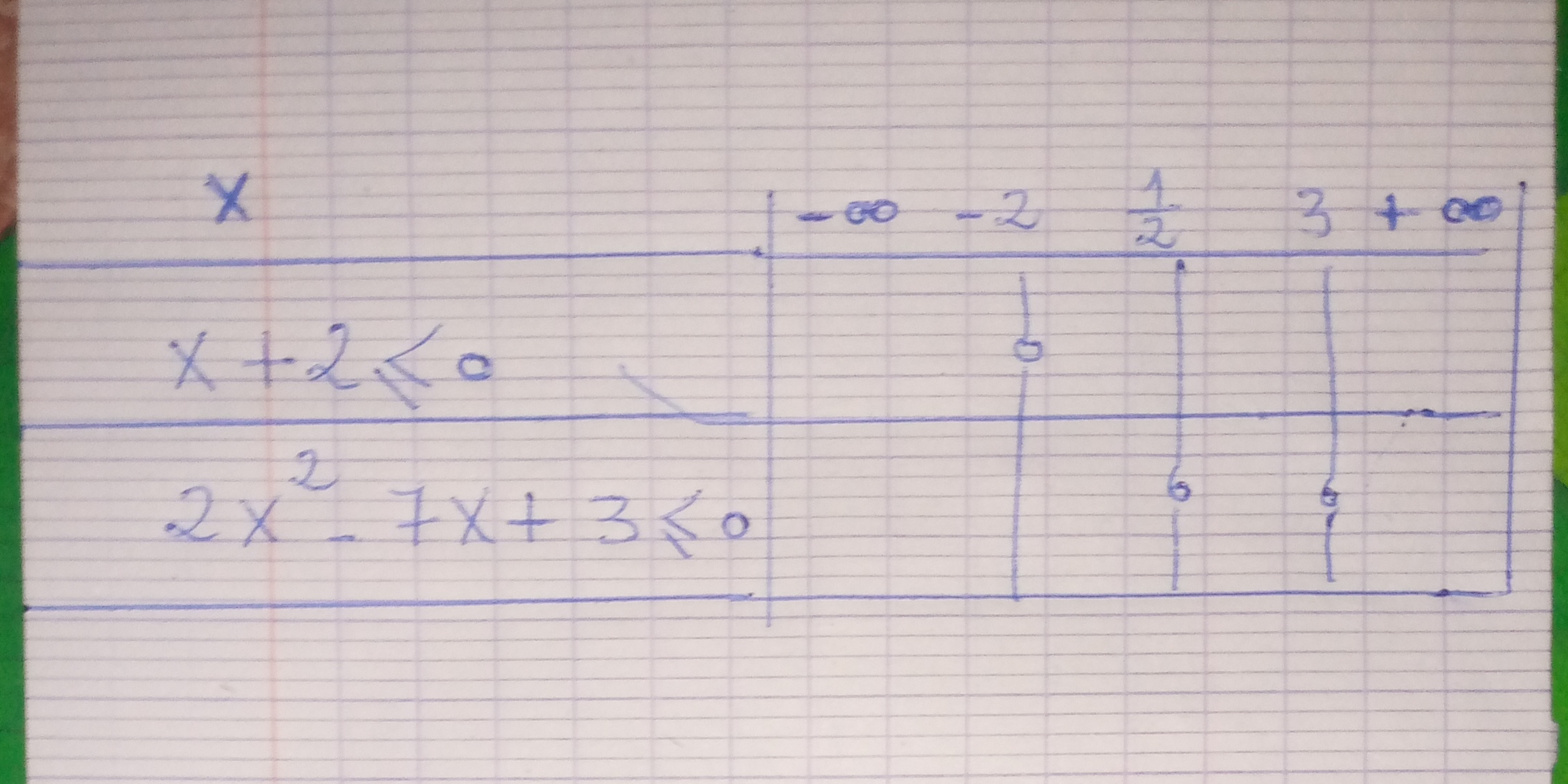Graph the inequalities x + 2 < 0 and 2x^2 - 7x + 3 < 0.

Understand the Problem
The question involves graphical representations of inequalities and algebraic expressions. It appears to ask for assistance in solving or interpreting these inequalities as shown in the image.
Answer
1. \( x < -2 \) 2. \( \frac{1}{2} < x < 3 \)
Answer for screen readers
The solutions are:
- ( x < -2 )
- ( \frac{1}{2} < x < 3 )
Steps to Solve
-
Solve the First Inequality
The first inequality is given as ( x + 2 < 0 ).
To solve for ( x ), subtract 2 from both sides: $$ x < -2 $$
-
Solve the Second Inequality
The second inequality is ( 2x^2 - 7x + 3 < 0 ).
First, we need to find the roots of the quadratic equation ( 2x^2 - 7x + 3 = 0 ). We can use the quadratic formula: $$ x = \frac{-b \pm \sqrt{b^2 - 4ac}}{2a} $$ Here, ( a = 2 ), ( b = -7 ), and ( c = 3 ).
Calculate the discriminant: $$ b^2 - 4ac = (-7)^2 - 4(2)(3) = 49 - 24 = 25 $$
Now plug values into the formula to find the roots: $$ x = \frac{7 \pm \sqrt{25}}{2 \cdot 2} = \frac{7 \pm 5}{4} $$
Calculate the roots: $$ x_1 = \frac{12}{4} = 3 $$ $$ x_2 = \frac{2}{4} = \frac{1}{2} $$
The roots are ( x = 3 ) and ( x = \frac{1}{2} ).
-
Test Intervals for the Quadratic Inequality
We will test intervals around the roots ( x = \frac{1}{2} ) and ( x = 3 ). The intervals are:
- ( (-\infty, \frac{1}{2}) )
- ( \left(\frac{1}{2}, 3\right) )
- ( (3, +\infty) )
Choose test points:
- For ( x = 0 ) in ( (-\infty, \frac{1}{2}) ): $$ 2(0)^2 - 7(0) + 3 = 3 > 0 $$
- For ( x = 2 ) in ( \left(\frac{1}{2}, 3\right) ): $$ 2(2)^2 - 7(2) + 3 = 8 - 14 + 3 = -3 < 0 $$
- For ( x = 4 ) in ( (3, +\infty) ): $$ 2(4)^2 - 7(4) + 3 = 32 - 28 + 3 = 7 > 0 $$
Thus, the inequality ( 2x^2 - 7x + 3 < 0 ) is satisfied in the interval ( \left(\frac{1}{2}, 3\right) ).
-
Combine the Results
Combine the results from both inequalities:
- From ( x + 2 < 0 ): ( x < -2 )
- From ( 2x^2 - 7x + 3 < 0 ): ( \frac{1}{2} < x < 3 )
The two inequalities do not overlap, so we have two separate solutions.
The solutions are:
- ( x < -2 )
- ( \frac{1}{2} < x < 3 )
More Information
The inequalities represent ranges of values for ( x ) that satisfy each equation. The first inequality indicates all values less than (-2), while the second indicates values between (\frac{1}{2}) and (3).
Tips
- Forgetting to test intervals: Many students skip testing the intervals after finding the roots of a quadratic inequality. This step is crucial for determining where the inequality holds true.
- Not using the correct signs: Pay attention to the direction of the inequality when solving for ( x ).
- Confusing the roots: It's common to mix up ( x_1 ) and ( x_2 ) when determining the intervals for testing.
AI-generated content may contain errors. Please verify critical information